Palm Pre First Impressions Review
Palm Pre First Impressions
Gordon managed to grab some alone time with the industry's new darling. Find out what he thinks...
Verdict
With CES now well and truly over we still have a few titbits to bring you which we’ll try and fit around the week’s other breaking news but I suspect there will be little more important announced than the Palm Pre smartphone and its Web OS platform.
Following our coverage of its announcement I managed to score some serious hands-on time with this remarkable device after some particularly sneaky persuasion so here are my first impressions. ![]()
Getting the major news out the way first: Yes indeed the Palm Pre is worth the tremendous amount of hype it has generated. It is a potentially game changing device which has unashamedly copied the best aspects from the likes of the iPhone (software design), Android (openness) and even the INQ1 (integrated social networking and automatic contact merging). So let’s now break it down.
The Palm Pre is a beautifully made phone. It may be slightly chunkier than the iPhone 3G but it feels equally good in the hand and a lot more sophisticated than the T-Mobile G1. In fact it somehow merges the feeling of a BlackBerry with an iPhone which is no bad thing at all. A nice touch is also the back of the phone where a mirror has been discretely positioned so it is only visible when the keyboard is slid out – handy. 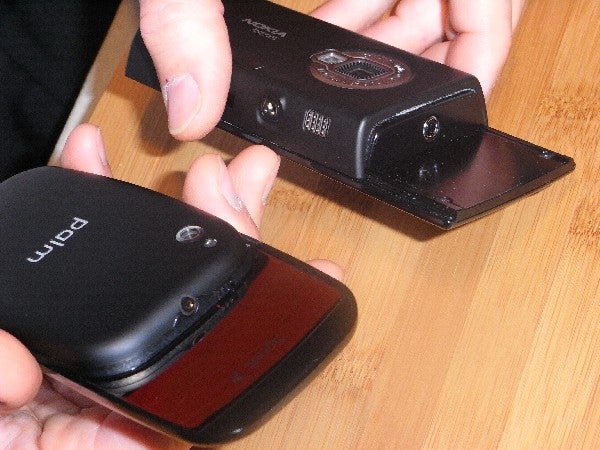
As for the keyboard itself, it’s perfectly fine. The layout is highly intuitive and representative of the huge amount of thought that has gone into the Pre’s design but its action isn’t quite as nice as that seen on the BlackBerry Bold or Nokia E71. Still, it is pre-production. Incidentally, I also found out so are the build materials as Palm hasn’t finalised them at this stage so there’s still room for further improvement.
At 3.1 inches, the screen could possibly have been a smidgen larger but with a 320 x 480 native resolution it is wonderfully vivid. Multi-touch also works a treat too since the Pre wisely employs a highly responsive capacitive touchscreen. 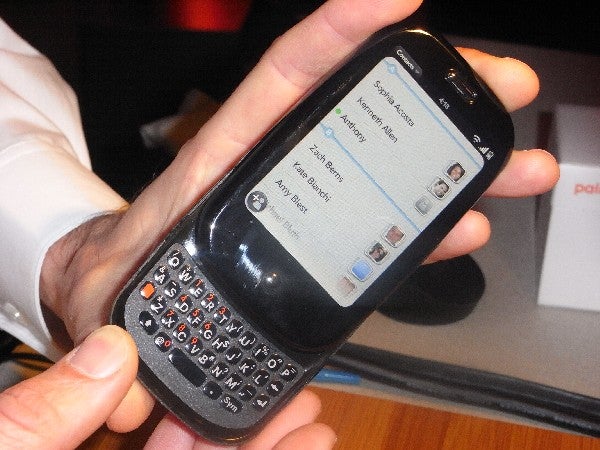
The camera? Well it may be just 3MP and utilise an LED flash but there must be a lot of clever processing going on in the background because it produced the best images I’ve seen at this resolution and remember, megapixels are far from the be all and end all of photo quality. In short, it’s far better than you’d expect.
Now nice as the Pre is, the real magic is performed by the superb Web OS and here it seems Palm has deliberately set out to not only (in some cases quite blatantly) swipe the best bits of its biggest rivals but also deliberately highlight their failings. Check out this list when compared to the iPhone, for example: multitasking, copy and paste, MMS, turn by turn Google Maps directions, Bluetooth 2.1 EDR with A2DP, video recording, multiple calendar support, drag and drop media content, free OTA syncing, an open source platform and a removable battery. Are you listening Mr Jobs?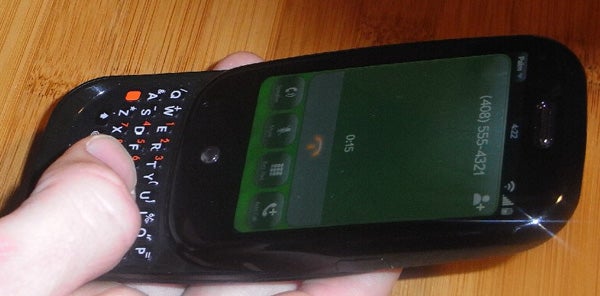
In practice however these inclusions are not just to score points they really are beautifully implemented. For those who are fans of the iPhone interface a homescreen of icons can be called up at any moment (and without exiting your particular application) while the ‘cards’ system of grouping open apps like browser tabs which can be shuffled between is quite brilliantly handled.
Perhaps even more impressive however is the implementation of Palm’s so-called ‘Think Ahead’ technology. The easiest way to think of this is like the native desktop search built into Vista or Spotlight on Mac OS X. Just start typing when not in any text entry field and the handset will start narrowing down your requirements automatically. ‘Blue Man Group’ was the example given in the presentation (‘Blu’ finding Bluetooth and a number of contacts before – offering to search in Google Maps, Wikipedia and the still unnamed web browser) but I chose my own Vegas-suitable example of ‘Casinos’.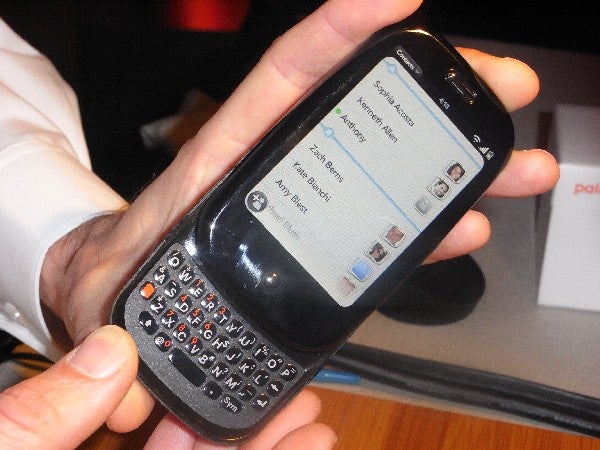
Typing ‘Ca’ brought up the likes of Calculator and Calendar plus some of Palm’s demo contacts from the address book. ‘Casi’ however expunged the handset of all possible native solutions however so I got the option to drop my search term into Google Maps, Wikipedia or the browser. Cleverly all three open with the result of your search term too instead of just starting each particular application. So good is this system, that it is the best justification for the inclusion of a physical keyboard I have seen in any modern mobile device. After all, it’s no longer just about personal preference, it’s a fundamental aspect of functionality.
Another nicety was the use of discrete notifications. Incoming SMS, MMS, IMs, emails and impending tasks or appointments (each could be triggered on request by a Palm representative) simply appear at the bottom of the screen without interrupting your workflow until you decide to turn your attention to them. All these methods of communication are then grouped together under each contact’s threaded conversation history. 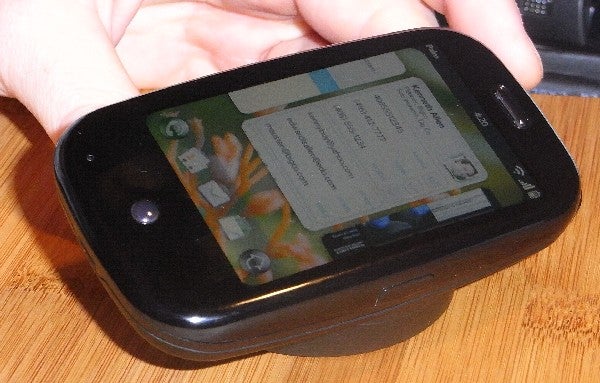
From what I saw of the native Amazon MP3 store, it is also very stylishly put together (more so than the rather rough and ready look it currently carries in Android) and the MP3 playback is excellent with vibrant cover art, iPhone-esque controls and the inclusion of that all important 3.5mm headphone jack. Sadly no video was loaded on my sample but I’m assured it will work in full screen and at up to 30fps.
The browser? Another shock. Being based on webkit just like Mobile Safari it renders full pages beautifully and quickly yet also supports Flash without much slowdown (just how good must that new TI OMAP 3430 CPU be?) and the mercilessly copied pinch and double tap navigation gestures are arguably more responsive than on the iPhone. In addition, despite its smaller screen size, the manner in which the browser operates mostly without messy URL and status bars means it feels equally large as Apple’s handset. 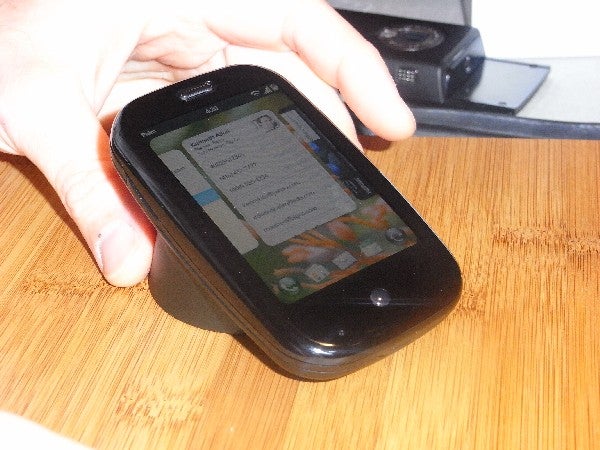
Shortcomings? Well, there were a number of things we couldn’t try at this stage. Maps was off limits, this wasn’t the HSDPA edition reputedly heading to Europe, there was no account setup to see how it handled OTA Amazon MP3 downloads and Palm’s native App Store rival (which I discovered will be called ‘App Catalog’) wasn’t onboard. The potential deal breaker however: no microSD/SDHC slot? Why oh why Palm?
Questions? Well, battery life obviously, while pricing is a biggie as Palm’s brand has been so heavily damaged over recent years that it really needs to match, if not beat, the iPhone’s brackets. Lastly, it must hit its first half of 2009 arrival timeframe if it is to avoid other larger companies coming in, ripping-off these innovations and beating them to market. 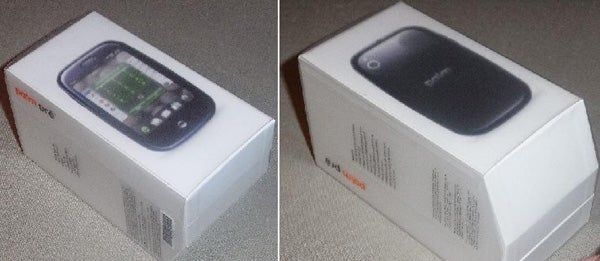
One thing is certain however: in 2009 the world may be going to hell in a handbag but for Palm it represents a renaissance of the grandest magnitude. Oh and for those who haven’t seen the company’s full CES video presentation I highly recommend it.
Links:
Palm Pre official page
CES Palm Pre Presentation via YouTube
How we test phones
We test every mobile phone we review thoroughly. We use industry standard tests to compare features properly and we use the phone as our main device over the review period. We’ll always tell you what we find and we never, ever, accept money to review a product.

